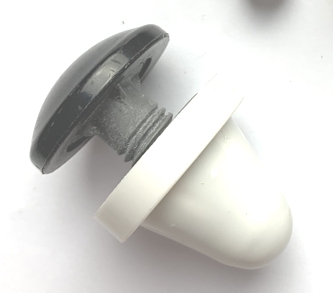Silo Bolt
Silo bolt is also called as guardrail bolt in Euro market.
The silo bolt is used in the silo tank which is storge for the oil ,normally, the surface require to be hot dip galvainzed for anti-rust. and the grade we made is 8.8, material by 1035 medium carbon steel with heat treatment.
For maximum strength of the joint, it is important to select the correct length of bolt. Longer bolts have a shank, and if the shank is too long, this will stop the nut tightening before the joint is fully closed, and the bolt will spin, damaging the glass coating; a bolt that is too short will not have enough thread for the nut to grip properly. In the joint, the shank of the bolt should be in shear, not the threaded part of the bolt. To work out the length of silo bolt required, measure the thickness of all the pieces that will make up the joint.
E.g. The vertical seam in the top ring of a silo: 2.0 mm sheet +2.0 mm sheet = 4.0mm.
Using Silo bolts
The head of the bolt is always inside the tank or silo, with the nut and washer outside. A blob of tank grade mastic (usually Sikaflex TS+) is applied over the hole before the bolt is pushed through, which will act as a cushion between bolt head and sheet, and seals the underside of the bolt head to the inner surface of the tank, thus protecting the bolt from corrosion by very aggressive chemicals. An erector on the outside places the washers on the protruding bolt, in a manner that sweeps the remains of the blob of mastic under the washer, to act as a cushion against the sheet surface. The external erector then puts the nut on to the end of the bolt, just giving it about half a turn, enough to stop it falling off. The bolts are then tightened with a nut runner to a torque of 65Nm. Where the sheet overlap is covered by a base or top angle, the nut next to this joint is only tightened to 32Nm; a tapered insert is usually fitted here. The bolts are tightened in an order that makes the joint evenly, so that the silo sheet is not stressed, which could damage the coating reducing the life of the silo or tank. The video below shows a good sequence of tightening. Alongside is a sectional view of a correctly made joint. There is a cushion of mastic under the bolt head and washer, and the edges of both sheets are protected by mastic. Naturally, the joint between the sheets is completely filled with mastic. The shank of the bolt, rather than the threaded portion, is in shear.


